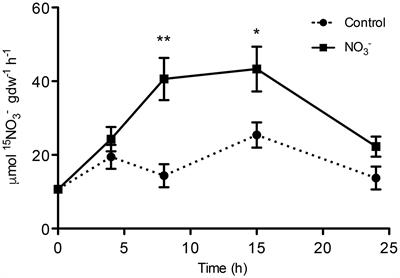Sigma As 227 Programmi
ABSTRACT Heat stress resistance and response were studied in strains of Lactobacillus plantarum. Jmicron Usb To Ata Atapi Bridge Driver Linux. Stationary-phase cells of L. Plantarum DPC2739 had decimal reduction times ( D values) ( D value was the time that it took to reduce the number of cells by 1 log cycle) in sterile milk of 32.9, 14.7, and 7.14 s at 60, 72, and 75°C, respectively. When mid-exponential-phase cells were used, the D values decreased. The temperature increases which caused a 10-fold reduction in the D value ranged from 9 to 20°C, depending on the strain. Part of the cell population treated at 72°C for 90 s recovered viability during incubation at 7°C in sterile milk for 20 days. When mid-exponential- or stationary-phase cells of L.


Jan 18, 2008. We investigated the mechanisms involved in the resistance to cell death observed in epithelial cancers. Here, we identify that primary epithelial cancer cells from colon, breast and lung carcinomas express high levels of the antiapoptotic proteins PED. CFLIP, Bcl-xL and Bcl-2. These cancer cells produced. ID Titolo Anno Amministrazione Scheda applicazione; 284: CCE cartella clinica elettronica: 2016: ASST Grande Ospedale metropolitano Niguarda. Jan 18, 2012. Moreover, the E248K mutation did not have additional effects on kinetochore localization in the context of Bub1 (227–270) (Fig. The following antibodies were used for immunoblotting: anti-Actin (mouse monoclonal antibody AC-40; Sigma-Aldrich; working dilution of 1:1,000), anti-GFP (in house made. Α-Chymotrypsin superactivity in quaternary ammonium salt solution: kinetic and computational studies. Wiley Cpa Exam Review 2015 Free Download. Laura De Matteis† ORCID logo *a, Francesca Di Renzoa, Raimondo Germanib, Laura Goraccic, Nicoletta Spretia and Matteo Tieccob aDepartment of Physical and Chemical Sciences, University of.
Plantarum DPC2739 were adapted to 42°C for 1 h, the heat resistance at 72°C for 90 s increased ca. 3 and 2 log cycles, respectively. Harris Cd Link Stl Manual High School.
Heat-adapted cells also showed increased growth at pH 5 and in the presence of 6% NaCl. Two-dimensional gel electrophoresis of proteins expressed by control and heat-adapted cells revealed changes in the levels of expression of 31 and 18 proteins in mid-exponential- and stationary-phase cells, respectively.
Twelve proteins were commonly induced. Nine proteins induced in the heat-adapted mid-exponential- and/or stationary-phase cells of L. Plantarum DPC2739 were subjected to N-terminal sequencing. These proteins were identified as DnaK, GroEL, trigger factor, ribosomal proteins L1, L11, L31, and S6, DNA-binding protein II HlbA, and CspC. All of these proteins have been found to play a role in the mechanisms of stress adaptation in other bacteria. Antibodies against GroES detected a protein which was induced moderately, while antibodies against DnaJ and GrpE reacted with proteins whose level of expression did not vary after heat adaptation.
This study showed that the heat resistance of L. Plantarum is a complex process involving proteins with various roles in cell physiology, including chaperone activity, ribosome stability, stringent response mediation, temperature sensing, and control of ribosomal function. The physiological mechanisms of response to pasteurization in L. Plantarum are fundamental for survival in cheese during manufacture. Lactobacillus plantarum, proposed as Streptobacterium plantarum by Orla-Jensen in 1919, is a widely distributed species in most fermented products of animal or plant origin, where it either is used in controlled fermentation or is derived from the environment and emerges after manufacture (). Plantarum is one of a group of mesophilic lactobacilli, referred to as the nonstarter lactic acid bacteria (NSLAB), which become the dominant microorganisms in several types of cheese during ripening. Starter lactic acid bacteria (e.g., lactococci) grow rapidly in cheese milk and curd during manufacture, reaching concentrations of 8.0 to 9.0 log CFU g −1, but the levels subsequently decline to approximately 1% of the maximum levels within a few weeks ().
In contrast, adventitious NSLAB usually grow from a low concentration (. Bacterial strains and culture conditions.
Plantarum DPC2739 and DPC2741, which were isolated from Cheddar cheese (Culture Collection of the University College, Cork, Ireland), and strains DC400 and 18E, which were isolated from sourdoughs (Culture Collection of the Dipartimento di Protezione delle Piante e Microbiologia Applicata, University of Bari, Bari, Italy) were used. Strains were routinely propagated and cultivated in MRS broth (Oxoid Ltd., Basingstoke, United Kingdom) at 30°C for 24 h. Heat resistance.Cells of L. Plantarum DPC2739 and DC400 were cultivated in MRS broth at the optimum growth temperature (30°C) until they reached the mid-exponential phase of growth (5 h; OD 620, ca.
1.0) or the stationary phase of growth (12 h; OD 620, ca. Cells were harvested by centrifugation at 9,000 × g for 10 min at 4°C, washed twice with 50 mM sterile potassium phosphate buffer (pH 7.0), and resuspended in sterile distilled water to an OD 620 of 2.5 (corresponding to ca. 9.0 log CFU ml −1). Each suspension was used to inoculate (4%, vol/vol) 5 ml of sterile milk. Samples (0.5 ml) of inoculated milk were transferred to capillary glass tubes (catalog no.